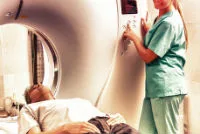
{“menuItems”:[{“label”:”When can health insurance cover MRI scans?”,”anchorName”:”#when-can-health-insurance-cover-mri-scans”},{“label”:”Compare health insurance from over 30 funds”,”anchorName”:”#compare-health-insurance-from-over-30-funds”},{“label”:”Terms and conditions to look for in health insurance policies”,”anchorName”:”#terms-and-conditions-to-look-for-in-health-insurance-policies”},{“label”:”Can you claim for MRI scans through Medicare?”,”anchorName”:”#can-you-claim-for-mri-scans-through-medicare”},{“label”:”What happens during an MRI?”,”anchorName”:”#what-happens-during-an-mri”},{“label”:”Why do you have to remove all metallic items?”,”anchorName”:”#why-do-you-have-to-remove-all-metallic-items”}]}
Medicare and health insurance won’t cover MRI scans that are classified as outpatient services. However, both can cover you if you’re admitted to hospital and require an MRI scan during the course of your treatment. So long as the reason for the scan is on the MBS list, even a basic hospital policy can ensure that you pay little to nothing.
If you are admitted to hospital as a private patient and require an MRI scan during the course of your treatment, health insurance can cover the gap between what Medicare pays and the total cost of the scan.
{“referer”:”/mri-and-health-insurance”}
What’s in this article?
Jump to…
Terms and conditions to look for in health insurance policies
- Sections that include MRI. Look for joint investigation, gastroscopy, diagnostic imaging, health screenings and similar terms. Depending on your particular health issues, you might be able to claim the MRI costs against these features.
- Annual benefit limits. This s the highest dollar amount that can be claimed per year for a certain procedure. They might also be per person, or per family if there are multiple people covered by your policy.
- Exclusions. This refers to conditions under which claims won’t be paid. Common exclusions include overseas treatment (covered by travel insurance), medically unnecessary scans and scans performed without a doctor’s referral.
- Pre-existing conditions. This can be a particular concern for seniors, as such conditions may accumulate over the years, slowly limiting your options. You may wish to look at health insurance options for baby boomers if you are over 65.
Medicare is Australia’s public health system, automatically available to all permanent residents. It almost always covers MRI scans, as long as it has been ordered by a GP or a recognised medical specialist.
If you receive an MRI scan as a public patient in a public hospital you can claim a rebate, providing it was part of a Medicare approved treatment. If you are covered by health insurance and opt to be treated as a private patient in a public or private hospital Medicare pays 75-85% of the cost, while the remaining amount is paid by your fund.
Get a more in-depth look at the costs of MRI scans
MRI machines pass radio waves through your body, some of which are absorbed by your body’s tissue before being retransmitted. By turning the large magnet in an MRI machine on and off, the machine picks up the radio waves you are giving off and uses these to generate a picture of a particular part of your body.
Before you undergo an MRI procedure, what you can expect will be thoroughly explained to you by the radiographer. After changing into a gown, you will be asked to lie on a table. This table then passes into the “tunnel” inside the MRI machine, where the scan will take place.
You’ll then need to lie on the table in the tunnel while the scans are completed, which can take anywhere from 15 minutes to an hour. You’ll hear a range of knocking and buzzing noises during the scan, but you won’t feel anything. You may be given a dye injection that makes the pictures the machine takes easier to examine, or you may need to hold your breath for some pictures.
One of the key things you’re told before undergoing an MRI scan is that you need to remove all metallic items before going into the machine. The reason behind this can be found in the “M” of “MRI”, which of course stands for “magnetic”.
MRI machines use very high-powered magnets to scan your body, so any metallic objects in the vicinity of the machine’s magnetic field can become magnetised and pulled towards the MRI magnet, which can be quite dangerous.
For example, let’s say you were to wear earrings into an MRI machine. Those metallic earrings could be pulled towards the MRI magnet with such force that they could be ripped from your ears.
For this reason, there are very strict measures in place to stop you taking any metallic items into an MRI scanner. Removing earrings, wedding rings, coins and all other jewellery before undergoing an MRI scan is the best way to ensure your safety.
Latest headlines
Picture: Shutterstock


